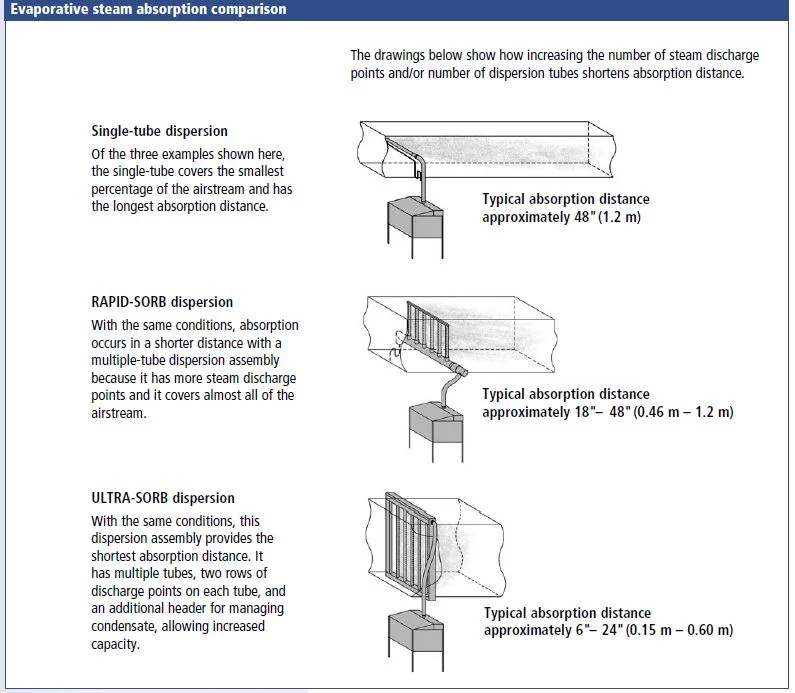Humidification Basics Part 11: Absorption Distance
/By Chad Edmondson (JMP) and Norman Hall (RLD)
What is absorption distance and why is it critical in humidification applications?
Absorption distance is the length of duct that is required to change visible water vapor into an invisible gas in a given application. As designers, we want to make sure that the steam dispersion assembly is located within the duct at a point where there is ample distance for this transformation to take place. Otherwise, moisture will collect on coils, dampers, fans or any potentially any other surface downstream. When you combine a warm air handling system with moist dust you create an environment prime for microorganisms to grow in.
Absorption distance depends on 3 factors:
Duct or AHU temperature. The cooler the air, the longer the absorption distance will be because cool air does not absorb moisture as readily as warm air.
The difference between the entering and leaving RH (∆ RH). Clearly, the more moisture you must add to the air to reach your desired RH, the more air volume you will need for absorption to occur.
Mixing of air and steam. For moisture to be absorbed into the air within the shortest distance, a thorough mixing of steam and air must occur right after the point of dispersion. This requires a steady airflow, as well as even dispersion of moisture into the air stream.
In most cases, designers will have very little space to work with when it comes to achieving steam absorption. To make things even more challenging, we are typically working with low temperature air, typically 50°F – 55°F with a RH of 80 to 90% inside the ductwork. What can we do to ensure adequate absorption, given these conditions?
Keep in mind that a single, steam jacketed dispersion tube of 6” on center with a single row of dispersion holes requires an absorption distance of at least of 3 ft. That’s more length than we usually have inside an air handler. So, single tube dispersion, which tends to cost less, is typically used with the humidifier mounted in the duct, not the air handling unit. When mounted in the AHU there is not enough distance to ensure sufficient air/steam mixing. Multiple tubes with equally spaced dispersion holes are usually required in AHU applications to ensure absorption.
This chart shows how tube arrangements impact absorption distance.



